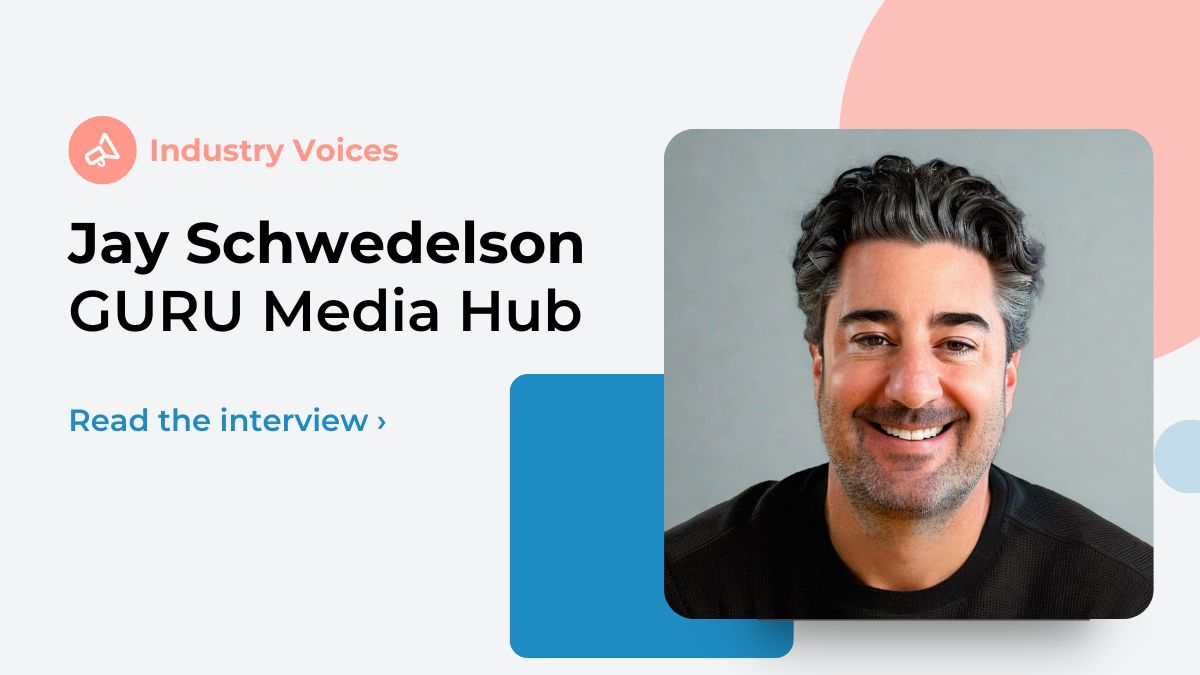
Jay Schwedelson on What Really Drives Clicks — And the Real Reason Your Email Flopped
Quick Answer
What’s the real reason your email didn’t get clicks?
Short answer: Your email likely flopped because it was boring, irrelevant, or made your audience work too hard. It’s probably not your emoji use, your subject line length, or a spam trigger word — those myths are outdated.
Why it matters: Low engagement kills your performance — not just in one campaign, but long term. It hurts your sender reputation, suppresses inbox placement, and signals that your audience doesn’t care. The fix? Stop guessing and start testing.
Top marketing expert Jay Schwedelson talks about what really works in email — and the outdated advice you should ignore.
When it comes to marketing tips, it’s hard to know what to trust. That’s why we picked the brain of someone who’s built his career on cutting through the noise and sharing what actually drives results — in email and beyond.
In this lively conversation, the founder of the GURU Conference and host of the mass-devoured Do This, NOT That podcast, Jay Schwedelson, unpacks the mindsets that work, plus a few small tweaks that lead to big wins.
Jay believes real growth (in business and life) comes from testing even the quirkiest ideas and leaning into discomfort instead of running from it.
In this interview, you’ll learn:
- Why bragging about the size of your email list is right out of amateur hour
- How relevancy and frequency work together to boost your results
- Why you should do things you think you never, ever should do
- How he makes virtual events vibrant, and how you can do it too
- Jay’s approach in the ring (We’re serious. He even has a strategy for facing a foe in the real world.)
Get ready to rethink what you’re sure of and take your email marketing into a new territory.
For the full experience, watch the video interview of Jay Schwedelson on YouTube.
Once it becomes a best practice, it’s probably outdated
Jay, you’re the host of Do This, NOT That, a podcast for marketers that I’m a big fan of. You’re all about busting myths. It’s one of the unspoken things you do.
I don’t know if everyone’s just lazy or if it’s the nature of the internet, but there is this constant spread of misinformation. Most of it is just old. I’ve come to realize that by the time something becomes a best practice, it’s likely outdated and often a myth. That means you shouldn’t be doing it. So I try to share new stuff and invariably that means I’m busting myths.
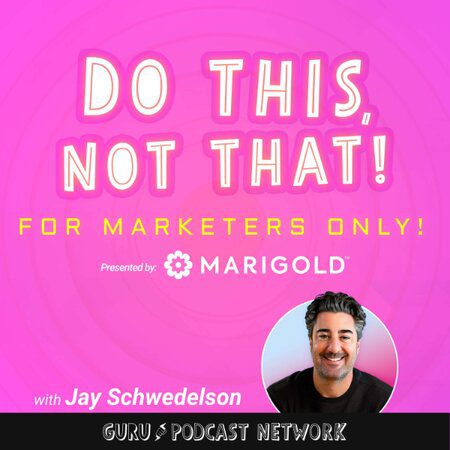
Spam trigger words alone don’t mean the junk folder
There’s no shortage of marketing tips from experts and so-called experts. What is the most misguided, harmful, wrong, stupid, bad, but prevalent advice?
Let’s talk about email for a second.
One myth is that using spam trigger words or writing an email in a certain way will cause it to be sent to spam. Or that you have deliverability problems because you put certain things in your subject line, or your body copy.
There’s the idea that the root cause of your emails not performing is that you used the word free or capitalized the word, or used an exclamation mark or an emoji in your subject line or headline. The thinking that your problem is using spam trigger words is information from 10 years ago.
Although that’s not the reason you’re going to the junk folder or spam folder, if you go on Google right now and search for “what should I do to avoid going to the spam folder?” It’ll say “avoid these words.”
It’s really challenging for marketers to navigate what they should and shouldn’t do, as they often don’t know which information to trust.
Introduce yourself in the context of email. Who is Jay Schwedelson?
That’s a tough one. I run a 100-person agency, and we handle a lot of email marketing for major brands. We send out approximately six billion emails a year for business and consumer brands. I see a lot of data on what works and what doesn’t for newsletters and promotional offers.
Related: How to start an email newsletter
I got into this email world about 15 years ago. I was sitting on my couch, and I was frustrated by people screwing up their subject lines. And I’m like, there’s got to be something better we could do. So I went on GoDaddy while on my couch, and I bought the domain subjectline.com.
I put up this website where people, to this day, can put their subject line in, and it tells them if it’s good or bad. And for some reason, people like using that crazy thing. Then all of a sudden, people said, “you must know about email. You’re the subject line guy.”
So I never claimed to be an expert of any kind. I’ve just been doing it a lot for a long time, and I’ve seen a lot of stuff. That’s kind of my jam.
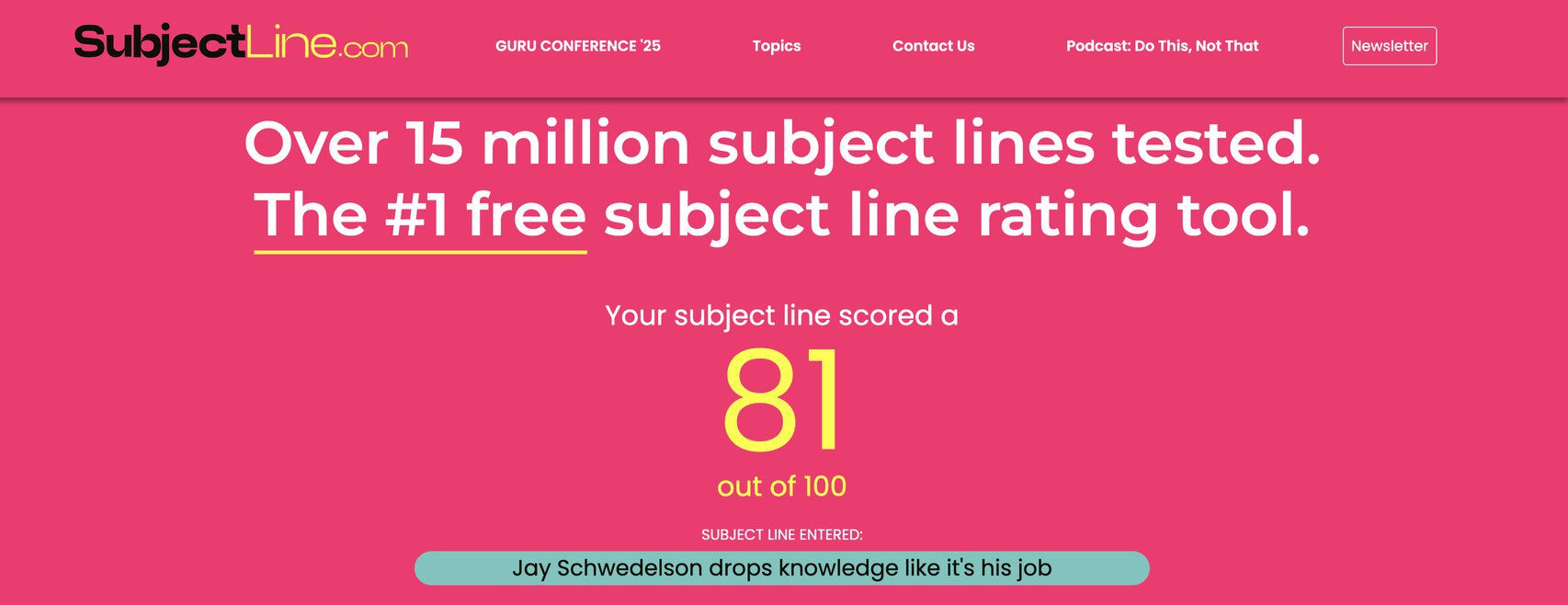
The sooner you tell somebody who they are, the faster they’ll engage
I love coming up with subject lines. Has there been a subject line G.O.A.T. in your estimation? Something that knocked you out?
Sometimes the weirdest things happen. We always test different things. Let’s do this, let’s do that. And then sometimes we screw up.
I’ll give you a great example. The other day, for one of our agency clients, they wanted to personalize the subject line with a person’s first name, which usually I think stinks. That’s like another relic from the past. But we screwed up for this client, and when we sent it out, all we did was put the person’s first name dynamically in the subject line.
So every email went out, it just said Jay or Rob or Sally. It said nothing else. No other words, it was just one word: the person’s first name.
And it did phenomenal. Crushed it! And in a million years, I never would have thought to test that. That is the essence of all of this. You have to test even the stuff you think is ridiculous.
Here’s the thing that works better than anything else in your subject line, and this is what everyone should plant in their brain.
The sooner you tell somebody who they are, the faster they want to engage.
So what do I mean by that?
Forget about personalization with their name. You tell somebody their interests: Just for golfers or Just for active investors.
You tell somebody their geography: Popular in Miami or Popular in Charleston, South Carolina.
You tell somebody the stage of life: Perfect for grandparents, or for big life events Just for new homeowners, or For people with a growing family.
Take whatever it is that you’re marketing to and explicitly say it.
You should do it on the business-to-business side as well: Just for CFOs or Just for marketing directors, right?
When you put in the subject line who you’re marketing to, as opposed to just marketing to them, you actually tell them it’s for them!
Immediately, you will see the percentage of people opening up the emails skyrocket. Why? Because when you see it, you see yourself in it, and you want to engage with it. That’s the number one tactic I think about.
That is such a powerful tactic. It has worked so well on me when I’ve seen myself. “Hey, wait a minute, that’s me in the subject line!”
First-person CTA buttons boost clicks by 25% or more
What do you think is the biggest thing that separates people who win at email and people who lose at email?
When people say “email doesn’t work for me,” it’s because there’s a lack of attention to the little things.
There’s no one thing you’re gonna do in your email marketing that’s going to fix everything. It’s a lot of little things that have an impact.
Take call-to-action buttons, something we often overlook. They’re the long rectangular buttons in our emails that we’re trying to get people to click on.
When we send out our emails, what do we ask people to do? We ask people to click the CTA button. Maybe the button will say “download,” maybe the button will say “register. “Maybe the button will say “buy now.”
All of those things on the CTA button are what we, the marketer, want customers to do, but none of those things answer the question: what’s in it for them?
When you flip the script on your call-to-action buttons and write them in the first person, your click-through rates increase by over 25%.
What does that feel like? You’re trying to get somebody to register for something like a webinar. Instead of the button saying “register,” you would have the button say “I want in.” Instead of “register,” it might say “save my spot.”
Or let’s say you’re trying to get them to buy a direct-to-consumer product. Instead of “buy now,” it may say “get my 25 % off now.”
When it’s written in first person and the person can see, that’s what I get out of this. And that’s when the click-through rates rise. This is a shining example of the small things that can have a huge impact on boosting the performance of your emails.
How can an email impress you?
First of all: get me to open it. I do open a lot of emails — and I like looking at things that aren’t boring.
We spend so much time asking, “Is this the right copy? Did I use the right words? Do I have the right offer?” We obsess over that.
But sometimes, you’ve got to take a step back and ask: Is this visually boring? There’s a lot of data showing that if your email has blocks of text — more than three lines — your click-through rates drop fast.
Why? Because it’s just like in your personal life — when you get a long block of text from a friend or relative, you think, “I’m gonna look at that later.” That’s a drama. You don’t have time for that.
Now apply that to email: even if it says you’ve won a billion dollars, if it’s five lines of text, you’re thinking, I don’t even know what that says — I don’t care. It’s a turn-off.
Here’s the other thing: I like emails that aren’t visually boring. I like a lot of white space — it makes the message easy to consume.
Too many of us focus only on what we’re promoting, not the experience of reading the email.
Related: Did you know that 67% of people prefer shorter emails?
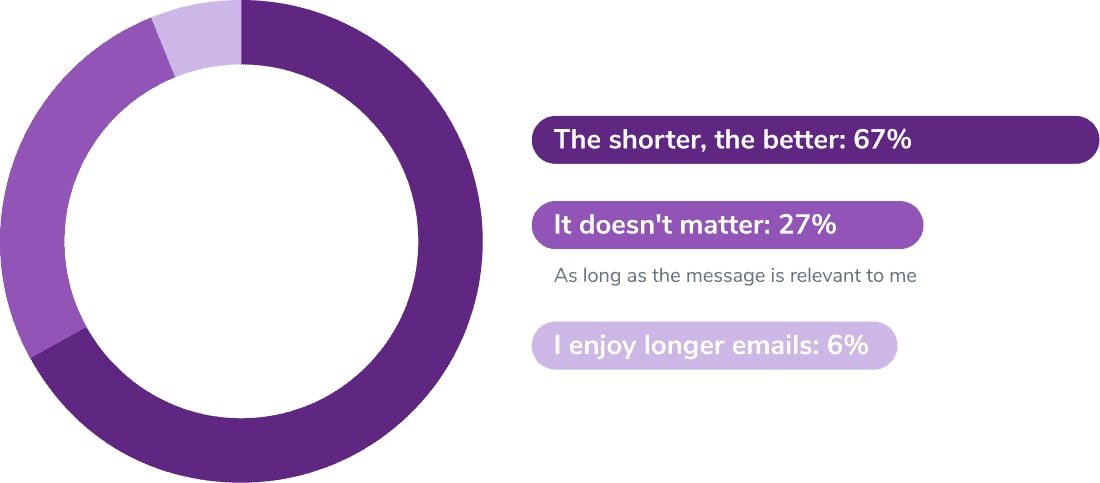
Successful marketers are the most frequent senders
What’s your biggest email pet peeve?
People think if they send less email, that means they’re not bothering people. They believe if it’s not working, it must be because they’re sending too much. That couldn’t be further from the truth.
It’s not about frequency. It’s about relevance. Relevance and frequency go hand in hand. If you’re sending relevant stuff, you could email me every day and I’d be excited.
The real issue? You’re sending too much boring garbage. That’s why it’s not working. And it’s terrible business math to think sending fewer emails will somehow get you more sales or more customers. It won’t.
What you need to ask is: Why isn’t this resonating? Why does it stink? Why is it boring?
Fix that — and then send more.
The irony is that marketers aren’t sending enough emails. Sounds crazy, but it’s true. The most successful marketers on the planet are also the most frequent senders — because they’re sending great stuff.
You need to get comfortable being uncomfortable
Jay, so often when I’m listening to Do This, NOT That, I notice how the professional and the personal overlap. If you could go back to the young Jay Schwedelson who is just starting out in adulthood and give him advice, what would you say?
I’ll tell you — that moment happened for me during COVID.
At the time, I had my agency business, and I was really scared because marketing budgets were getting frozen. Everyone was freaking out. I had a big payroll and didn’t want to lay anyone off or furlough people. I was nervous.
Up until then, I had never really posted on social media. I don’t think I ever posted on LinkedIn. I definitely didn’t have a podcast or anything out there. But I thought, I don’t want to go out of business. So I knew I had to start posting, start doing stuff, start jumping up and down. I needed to meet more people — maybe I could get new clients.
So I went hard in the direction of just being out there. And honestly, that went against everything in my fiber. In my personal life, I’ve never even posted on Facebook. I don’t think I ever have.
But I realized: If I want to keep the party going in my life, I need to get comfortable being uncomfortable.
People want to connect with people — especially now, in this tidal wave of AI-generated garbage. So, if you want to grow your career, your business, or anything at all, you’ve got to get comfortable being uncomfortable. That’s what cuts through the noise.
I wish I had started 15 years ago instead of five. It would’ve made such a difference.
And listen — you’ve got to do the stuff you don’t want to do. That’s it. That’s why I’m not a big believer in the whole “you have to love your job” idea.
No — you don’t have to love every part of your job. You just need to be passionate about it. You need to feel like you’re learning, growing, doing. But you’re not going to love every task that moves the ball forward. That’s just reality.
That was a fantastic episode of your show when you covered that. A friend of mine once said, “Maybe — just maybe – most of us aren’t supposed to love our jobs.” And I thought, wow, that’s great.
I agree.
If you don’t validate your email database annually, you’re rolling the dice
You were on the Amy Porterfield Show — and it was a fantastic episode. There was this moment where you dropped the “ZeroBounce” word. You said it wasn’t an endorsement, but you told everybody to clean their list. Thank you.
First of all, Amy’s the best. Her show is the best.
And I’ll be honest — I like ZeroBounce a lot. I’m not just saying that because I’m talking to you. There are a lot of players in the email validation and improvement space, but I think ZeroBounce is phenomenal.
Now let me get on my soapbox for a second: It doesn’t matter if you’re a business or consumer marketer — if it’s not table stakes in your organization to validate your email database at least once a year, you’re rolling the dice. It’s like owning a car or a house without insurance. You’re just hoping nothing goes wrong, and that’s no way to grow a business. Something will go wrong.
So tools like ZeroBounce — and others in the space — provide a very important service. And frankly, it’s relatively inexpensive.
What would you say to the person looking at their list of precious contacts — thinking of each one like a dollar bill? They say, “Jay, are you telling me to roll down the car window and let my money fly out?”
I like that analogy. (Laughs).
But honestly, when people get an ego about the size of their database — that’s weird. Who cares how many people are on your list? What matters is how many are actually engaged, how many real humans care about what you’re sending.
It’s bad practice to keep emailing people who aren’t opening or clicking. It hurts your performance. And if your company ties success or your career growth to the size of the list instead of engagement, they don’t really know what they’re doing. That should never be the North Star.
Now, to talk out of both sides of my mouth — yes, you do have to focus on list growth. You should have things running every day, even while you sleep, that help grow your database. But the goal is to bring in people who care, and to let go of the ones who don’t.
Let people unsubscribe. Not everyone is meant to be on your list. To have raving fans, you also have to accept that some people aren’t a fit — and that’s okay.
Stop thinking “bigger” is always better when it comes to your email list.
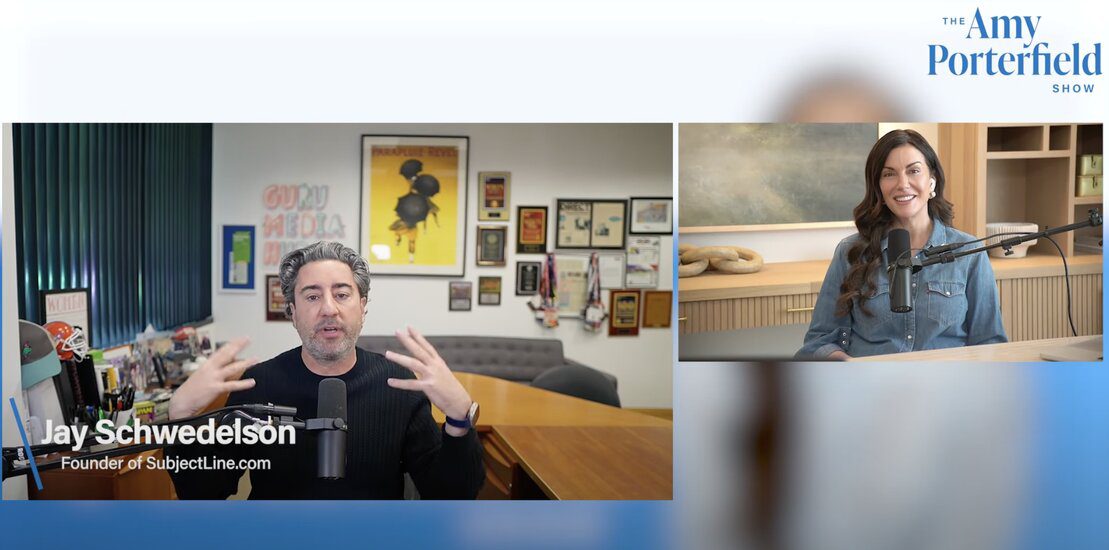
One more Amy Porterfield question. Yes or no — is it true Amy Porterfield has no flaws?
I’m gonna tell her you said that.
No, but Amy’s great. And she’s in a really powerful space — the digital course industry. That industry has exploded. It’s a $300 billion market, and I don’t think people realize that.
I always recommend: if you’re thinking about a side hustle, consider creating a digital course. It’s a great business. And if you want to learn how to do Instagram right, follow Amy Porterfield — she crushes it better than anyone I’ve seen.
In general, people are sleeping on the power of digital courses. I’ve taken a bunch, on everything from business to even how to use travel points better. There’s a digital course for everything.
Nicole Kidman is keynoting the next GURU Conference
One thing that you are rearranging the game on is your GURU Conference. There’s probably some secrets you can’t tell us, but what is on the horizon for the next GURU Conference?
GURU Conference is coming up this November. It’s the world’s largest email marketing event, and we appreciate ZeroBounce participating. It’s virtual, and it’s free.
Last year, we had 25,000 people attend. If you want to register, go to guruconference.com. It’s bonkers – unlike any other virtual event you’ve ever been to. Last year, we had Joey Chestnut doing a spam-eating contest.
This year? Nicole Kidman is keynoting.
We’ve got some of the wildest ideas we’ve ever had, and when we announce them, they’ll blow your mind.
Even if you don’t care about email marketing, you should still attend GURU Conference. Not because it puts a dollar in my pocket (it doesn’t; it’s free). But because we’ve tried hard to reimagine what a virtual conference can be.
That’s why there’s no on-demand. You either show up or you miss it.
People love to say, “Virtual events are dead, that was just a COVID thing.” That’s just not true. You just have to approach them in a different way. And that’s what we try to do at GURU Conference.
So buckle up – this November is going to be bonkers!
With your conference, it seems like you feel there are no limits in terms of who you can get. Would you say that’s a fair assessment?
It is now.
I’ll tell you, year one of the event, when we first started, we were like, “Okay, we’re doing this virtual conference.” Our keynote that first year was Daymond John. It wasn’t easy to get him because we had no track record.
But then we were able to get Martha Stewart, Sarah Jessica Parker, the cast of Love is Blind, Debbie Gibson from the 1980s doing a karaoke contest… all kinds of wild stuff.
And now, because we’ve built that track record, we have more cachet to get the people we want.
One of the most fun meetings we have is called Does This Suck? The whole team gets together, and there are no bad ideas. That’s how the Joey Chestnut thing happened. A bunch of marketers ate Spam in a contest against him.
We go into it with the mindset: “Unlimited budget – what should we do?” Everyone throws out the wildest ideas, and then we just try to see who we can get to say yes.
Here’s the secret sauce: if this were an in-person event, it would be much harder to pull off. You spend a ton of money, and most celebrities don’t want to travel or give up a whole day. But if you ask a celebrity to flip on their camera for 30–40 minutes? That’s way more doable. Much easier to get a yes.
That’s one of the reasons we’ve stayed virtual. We think we’d lose a lot of what makes the conference special if we went in person.
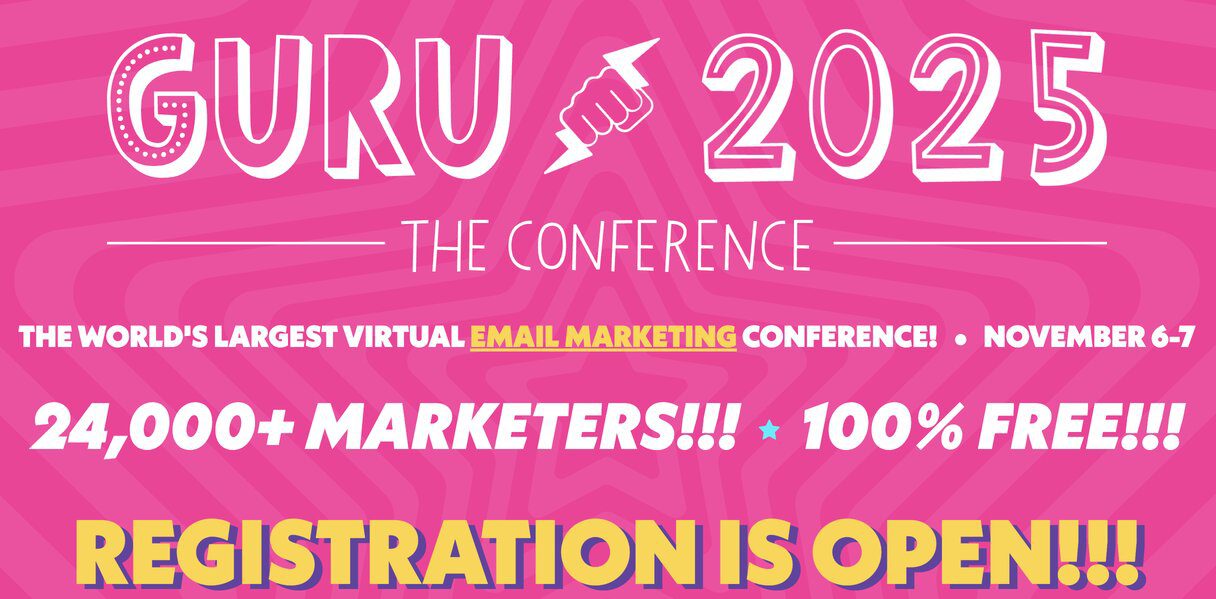
I like the way you think, Jay. Now imagine this for a moment. You’re in a large arena. Two fighters are going at it and suddenly, the arena goes dark. Jay Schwedelson is coming out. You’re stepping into the ring. What song is playing?
I love this.
I’d have a few.
First of all, Thunderstruck by AC/DC — definitely up there. That fires me up, absolutely!
But I’m also a pretty cheesy ’80s guy, so Livin’ on a Prayer by Bon Jovi can really get me going too. That one’s dangerous, because even though I’m a little too old, if I’m out at a wedding or restaurant and it comes on, I want to find a microphone and sing it. I have the worst voice of all time —but that song fires me up.
So now I need to know – what’s your song?
Your Thunderstruck choice is really, really good. Maybe something from Led Zeppelin. But first, would you come running out, charging into the ring? Or would you just kind of saunter?
Oh no, I’d come running out. I’d run to the other side, then try to find the exit and get out the other side. Because if I were in an arena and had to fight people, I would lose. So I’d just try to run before the lights came on, escape, and go home and go to sleep.
Very good. Yeah, it would be Kashmir by Led Zeppelin for me.
That’s cool. I like that one. That should be the opener of your show.
So as we wrap up here, Jay, I believe you’re headed to Las Vegas this weekend, right?
Yes, I am. Every year, six of my college friends and I do an annual guys’ trip. I’m not much of a partier, and honestly, I never want to go, but we all go away every year.
I’ll tell anyone out there: you should do something like this once a year. Make two or three days to go, because there are very few people in your life who know you from back in the day and can bust your chops and keep it real.
So we go. I’m sure I’ll be extremely tired, feel like garbage, and eat a lot of pizza, but I’ll report back.
Test everything, especially the things your organization says you can never do
Is there any takeaway that you’d like to leave people with?
Test everything. Especially the things in your organization that are considered “never-do’s.” If you’re told, “We can never do this or that,” that’s precisely what you should fight to test.
And if they say no, ask, “Okay, you don’t want to test it on 100% of the database? Give me 10% of the database. Let me test a sliver and prove it out.” You’ve got to win the day with testing. Anyone who’s against testing — you’re in the wrong place.
Very good. Jay, thank you so much for spending time with us. It’s been a great joy.
Appreciate you having me on, and let’s do it again.
I want to tell you something real quick because with your sense of humor, you’d appreciate this. I was at a bookstore the other day, and there was this lady sitting across from me. She took her shoes off, propped them up on the space next to me, and I thought of you and your rants.
No.
Well, what is wrong with people? Everyone makes themselves at home in the weirdest places. You don’t take your shoes off anywhere but at home. Maybe at the podiatrist — that’s it. Everyone needs to stop. Keep your shoes on. What are we doing?
You can learn more about Jay and his work at SubjectLine.com and sign up for GURU Conference here. Also, check out his podcast, Do This, NOT That.
Table of Contents
- Quick Answer
- Once it becomes a best practice, it's probably outdated
- Spam trigger words alone don’t mean the junk folder
- The sooner you tell somebody who they are, the faster they’ll engage
- First-person CTA buttons boost clicks by 25% or more
- Successful marketers are the most frequent senders
- You need to get comfortable being uncomfortable
- If you don't validate your email database annually, you're rolling the dice
- Nicole Kidman is keynoting the next GURU Conference
- Test everything, especially the things your organization says you can never do






